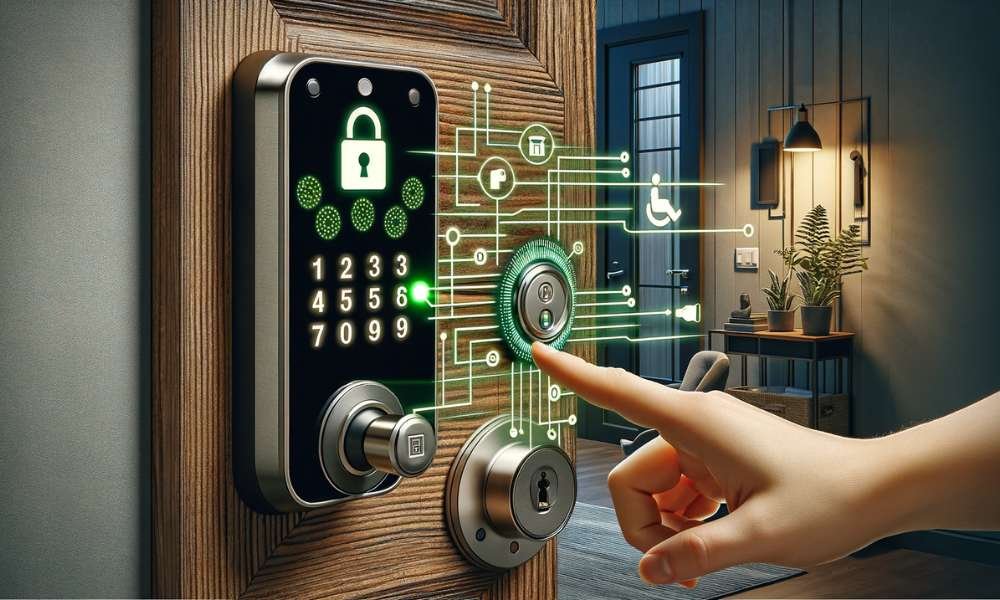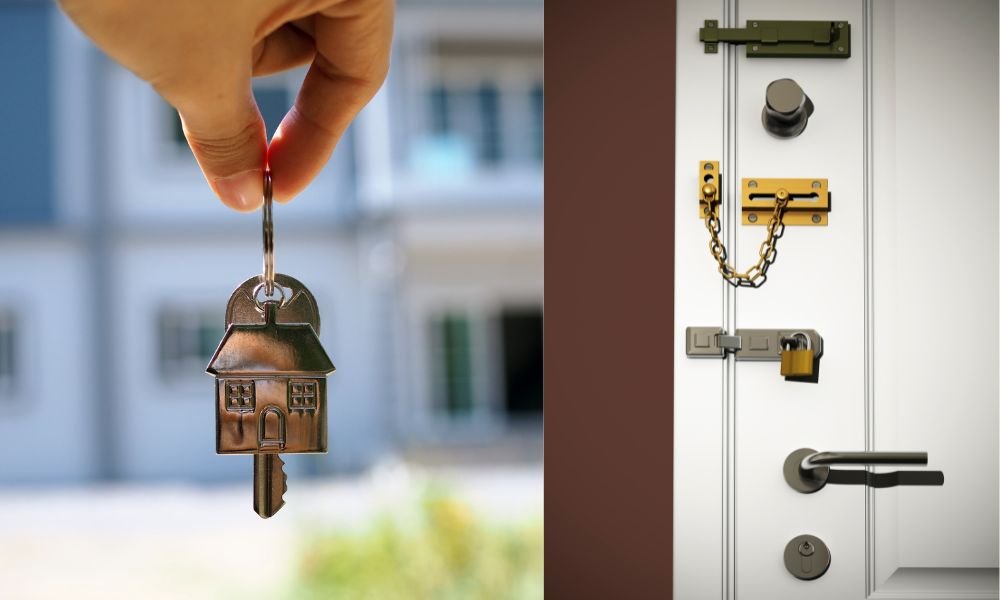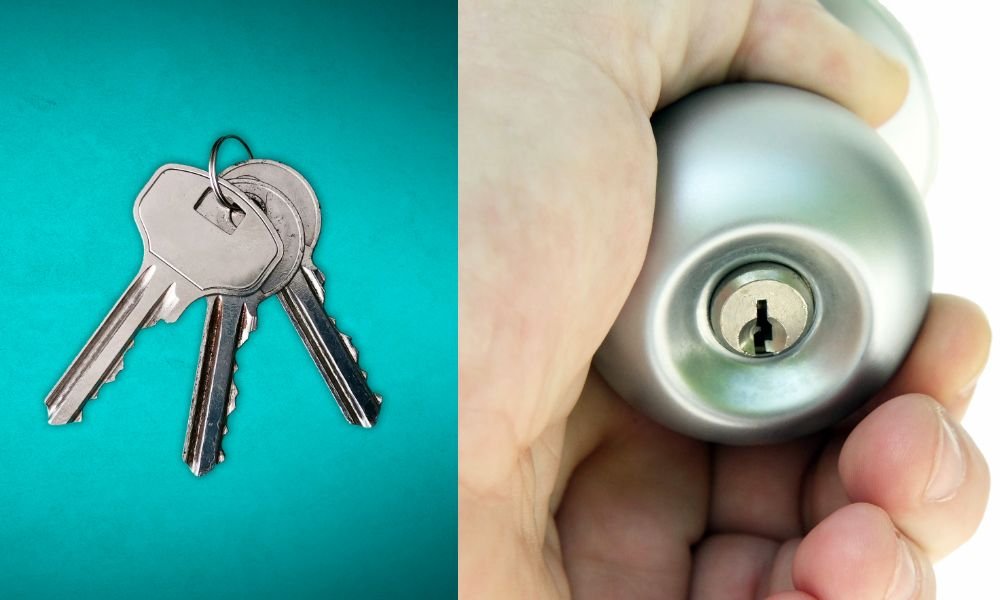In the evolving landscape of home security, keypad door locks have emerged as a front-runner, offering a blend of modern technology and enhanced security measures. These electronic alternatives to traditional locks provide ease of access with just a numerical code, eliminating the need for keys. This guide delves into the essentials of utilizing effectively including, How to use keypad door lock?
Understanding Keypad Door Locks
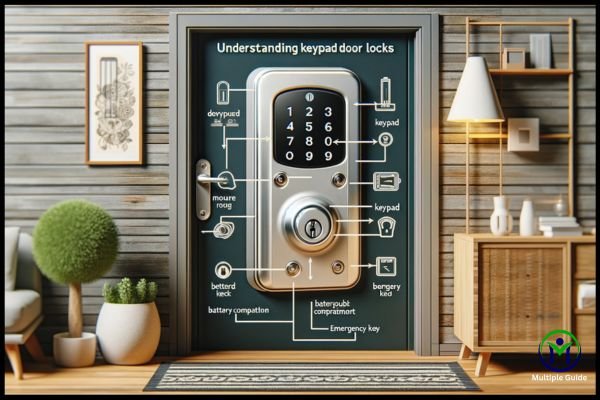
A keypad door lock operates through a numeric code entered on a keypad, rather than a physical key. Typically powered by batteries, these devices vary in features, such as the ability to handle multiple user codes, one-time access codes, and compatibility with advanced smart home systems.
Advantages of using
Keypad door locks are revered for their superior security features, operational convenience, and adaptability, which are delineated below:
- Increased Security: Traditional lock-picking methods become obsolete with keypad locks, as there are no physical keys to duplicate or manipulate. These locks often incorporate features like built-in alarms and tamper-resistant technology, which significantly bolster the security of your property.
- Convenience: The hassle of carrying keys is completely bypassed with keypad locks, making them ideal for quick and easy access. This is especially beneficial for households or businesses where multiple individuals require entry, and it alleviates the common issue of lost keys.
- Customization: This is highly customizable. Users can manage multiple access codes, set temporary codes for guests, or change codes when needed, offering a high level of control over who enters the property.
- Control: Enhanced control is a pivotal benefit of using keypad locks. Owners can instantly alter access codes to prevent unauthorized entry following a security threat or change in personnel, providing peace of mind and an added layer of security.
Choosing the Right One
Selecting an appropriate keypad door lock requires careful consideration of several key factors:
- Security Features: Opt for locks equipped with robust security functions like automatic re-locking, intrusion alarms, and code privacy features that prevent others from guessing codes through fingerprint marks.
- Integration Capabilities: For those invested in smart home technology, choosing a lock that integrates with your existing system is crucial. This ensures seamless operation and the possibility to manage your lock through other smart devices.
- Battery Life: Always consider the battery life of it. Longer battery life means less maintenance and fewer worries about the lock failing due to power issues.
- Weather Resistance: If installing the lock on an exterior door, make sure it’s built to withstand weather conditions such as rain, snow, and extreme temperatures to ensure longevity and reliable operation.
How to Install
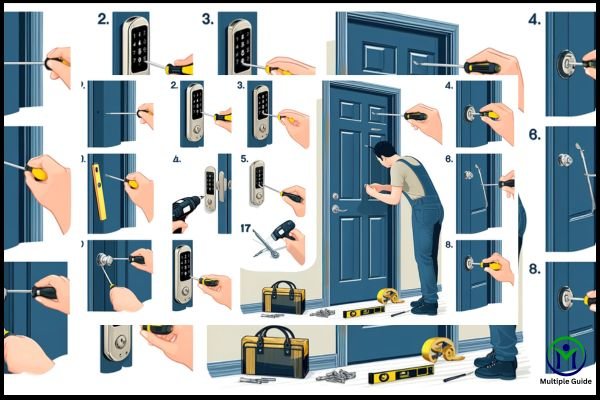
The installation process of a keypad door lock is typically straightforward, though specifics can vary by model. Here is a general overview:
- Remove the Existing Lock: Begin by carefully removing your current door hardware to make way for the new system.
- Install the New Lock: Place the new one into the door, ensuring it aligns perfectly with the door’s structure for optimal security and functionality.
- Connect the Batteries: Properly insert the batteries based on the manufacturer’s guide to power the system.
- Program the Lock: Set up your primary and secondary access codes following the instructions provided, making sure to test the lock several times to confirm it is functioning correctly.
How to Operate
Operating a keypad door lock is generally simple, but understanding the specifics can enhance your experience:
Setting Up User Codes
- Primary Code: The primary code is your main access code and should be set up during the initial programming of your lock.
- Additional Codes: For homes or businesses with multiple users, setting up additional codes is a practical way to grant access while maintaining overall security.
Daily Use
- Entering Your Code: Type in your code on the keypad. Modern units are equipped with features like backlit keys for visibility at night and quick-lock buttons for immediate locking when leaving.
- Locking the Door: Many models feature automatic locking, but some may require a manual command to secure the door from the outside.
The way of Maintenance
Regular maintenance is crucial for the longevity and efficiency of your keypad door lock:
- Battery Replacement: Keep an eye on the battery indicator; low power warnings should prompt immediate battery replacement to avoid lockouts.
- Keypad Care: Regularly clean your keypad to prevent build-up that might hinder button functionality.
- Regular Checks: Periodically inspect the entire lock system, including hardware and fittings, to ensure everything is secure and operational.
Troubleshooting Common Issues
Common issues can often be resolved with simple fixes:
- Non-Responsive Keypad: Replacing the batteries can solve most responsiveness issues, as most problems stem from low power.
- Failed Code Entries: If entry codes do not work, reset your lock according to the manufacturer’s guidelines and re-enter your codes.
- Frozen Keypad: In colder climates, this may be frozen. Avoid using excessive force; instead, gently warm the keypad with a hand-held heater or warm cloth.
Conclusion
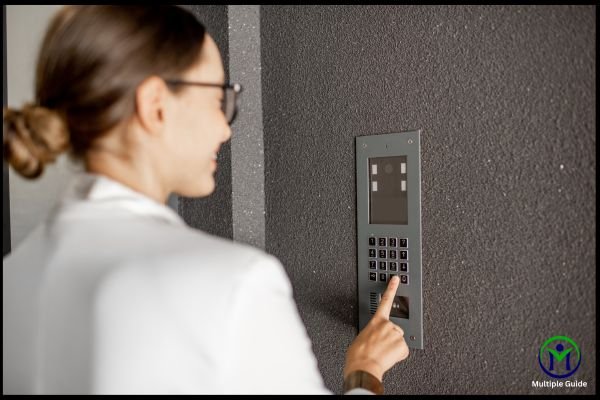
Keypad door locks are a secure, convenient, and flexible option for modernizing your property’s access. This guide provides the insights needed to effectively select, install, and utilize, even enhancing both security and convenience at your doorstep. Regular upkeep and prompt troubleshooting can help maintain the lock’s functionality and ensure it serves your needs reliably for years to come.

